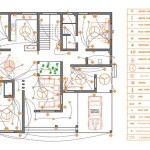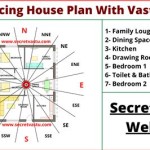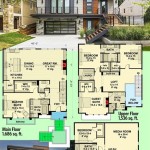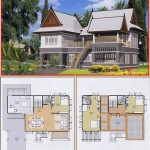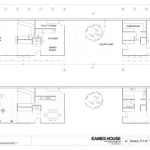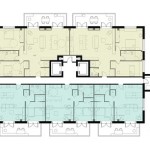House Plan Considerations for Narrow Lots
Designing a house for a narrow lot presents unique architectural and spatial challenges. Successfully navigating these challenges requires careful planning and consideration of various factors, including building codes, spatial optimization, and natural light maximization. This article explores key aspects of house plans tailored for narrow lots, providing insights into optimizing space and creating functional and aesthetically pleasing dwellings.
Understanding the Constraints and Opportunities
Narrow lots, characterized by limited width relative to their depth, often necessitate innovative design approaches. The primary constraint is the restricted frontage, which limits the building's width and can significantly impact layout options. However, these limitations also present opportunities for creative solutions. For example, a narrow lot encourages vertical expansion, leading to multi-story designs that maximize living space. Furthermore, carefully planned landscaping and fenestration can enhance the perceived spaciousness and create a sense of openness, mitigating the potential feeling of confinement.
Before embarking on the design process, conducting a thorough site analysis is crucial. This analysis should encompass several key elements. First, review local zoning regulations and building codes, specifically those pertaining to setbacks, height restrictions, and permitted building envelope. These regulations dictate the allowable building footprint and vertical limits. Second, assess the site's orientation and solar aspect. Understanding sun angles throughout the year is essential for optimizing natural light penetration and minimizing unwanted heat gain. Third, examine the surrounding environment, including adjacent buildings, trees, and views. This assessment informs decisions about window placement and building orientation to maximize privacy and capitalize on any desirable vistas.
The existing topography of the lot also plays a significant role in determining the optimal house design. Sloping lots, while potentially posing challenges for construction, can offer opportunities for walk-out basements or split-level designs, adding usable living space and architectural interest. Addressing drainage issues and ensuring proper stormwater management are crucial considerations when dealing with sloping sites.
Optimizing Spatial Layout and Functionality
The hallmark of a successful house plan for a narrow lot is efficient space utilization. Given the limited width, prioritizing open-plan living areas is often a practical approach. Combining the living room, dining area, and kitchen into a single, interconnected space creates a sense of spaciousness and allows for greater flexibility in furniture arrangement. Minimizing hallways and internal partitions further contributes to maximizing usable floor area.
Vertical circulation, such as staircases, requires careful consideration. Traditional staircases can consume a considerable amount of floor space. Exploring alternative designs, such as spiral staircases or compact, space-saving stair configurations, can free up valuable square footage. Strategically locating the staircase near an exterior wall can also facilitate natural light penetration and improve ventilation.
Storage solutions are particularly important in narrow lot houses. Built-in cabinetry, shelving units, and under-stair storage can effectively maximize space and minimize clutter. Utilizing vertical space for storage, such as tall cabinets and shelving that extends to the ceiling, is a practical way to compensate for limited floor area. Consider incorporating multipurpose furniture, such as sofa beds and expandable dining tables, to further enhance functionality and adaptability.
Attention to detail in interior design can significantly impact the perceived spaciousness of a narrow lot house. Light colors, reflective surfaces, and strategically placed mirrors can create the illusion of a larger space. Minimizing visual clutter and maintaining a cohesive design aesthetic further contributes to a sense of order and spaciousness. Incorporating elements of biophilic design, such as indoor plants and natural materials, can also enhance the sense of well-being and create a more inviting living environment.
Maximizing Natural Light and Ventilation
Natural light is a critical element in creating a comfortable and livable home, especially in a narrow lot house where windows may be limited. Maximizing natural light penetration can significantly enhance the perceived spaciousness and create a brighter, more inviting atmosphere. Careful consideration should be given to window placement, size, and orientation to optimize sunlight exposure throughout the day.
Skylights and clerestory windows can be particularly effective in bringing natural light into areas that may not have direct access to exterior walls. Skylights can be strategically placed above staircases or kitchens to illuminate these areas without compromising privacy. Clerestory windows, positioned high on walls, allow natural light to penetrate deep into the interior while maintaining privacy from adjacent buildings. The use of light wells, open shafts extending from the roof to lower levels, can also provide natural light to interior spaces.
Ventilation is equally important for maintaining a healthy and comfortable indoor environment. Cross-ventilation, achieved by strategically placing windows on opposite sides of the house, allows for natural airflow and helps regulate indoor temperature. Operable windows should be carefully positioned to capture prevailing breezes and promote air circulation. In climates with high humidity, incorporating ceiling fans or other ventilation systems can further enhance comfort.
Landscaping can also play a role in optimizing natural light and ventilation. Deciduous trees, planted strategically, can provide shade during the summer months and allow sunlight to penetrate during the winter. Carefully selecting plant species and maintaining appropriate pruning practices can ensure that vegetation does not obstruct natural light or airflow.
Thoughtful planning and careful execution are essential for creating a successful house plan for a narrow lot. By understanding the constraints and opportunities presented by the site, optimizing spatial layout and functionality, and maximizing natural light and ventilation, it is possible to design a dwelling that is both aesthetically pleasing and functionally efficient.
Addressing Privacy and Noise Concerns
Narrow lots often mean closer proximity to neighboring properties, making privacy and noise mitigation crucial considerations in the design process. Strategic window placement, landscaping, and soundproofing techniques can effectively address these concerns and create a more comfortable and private living environment.
Window placement should be carefully considered to minimize direct views into neighboring properties. High windows, clerestory windows, and frosted glass can provide natural light while maintaining privacy. Utilizing window treatments such as blinds, shades, or curtains offers additional control over privacy levels. Landscaping can also be used to create visual barriers and screen undesirable views. Trees, shrubs, and hedges can effectively block sightlines and create a sense of enclosure.
Noise transmission between adjacent properties can be a significant concern in narrow lot developments. Implementing soundproofing techniques during construction can help mitigate noise pollution and create a quieter living environment. Installing sound-dampening insulation in walls, floors, and ceilings can effectively reduce noise transmission. Double-paned or triple-paned windows can also significantly reduce external noise intrusion.
The layout of the house can also be designed to minimize noise transmission. Placing bedrooms away from street-facing walls and common areas can help create a quieter sleeping environment. Utilizing buffer zones, such as hallways or storage rooms, between living spaces and adjacent properties can further reduce noise transmission. Careful selection of building materials can also contribute to soundproofing efforts. Dense materials, such as concrete and brick, are more effective at blocking sound than lightweight materials.

Simple Narrow Lot House Plans Houseplans Blog Com

The Advantages Of Building A Narrow Lot Home House Plans Small Floor
House Plan Of The Week Narrow And Luxurious Builder

Simple Narrow Lot House Plans Houseplans Blog Com

Budget Friendly Narrow Lot House Plan

Narrow Lot House Plans One Story

Elegant House Plan For Narrow Lot 36419tx Architectural Designs Plans

2 Story House Plans For Narrow Lots Blog Builderhouseplans Com

Ontario Inspired Narrow House Plans The Designers

Plan 034h 0190 The House

